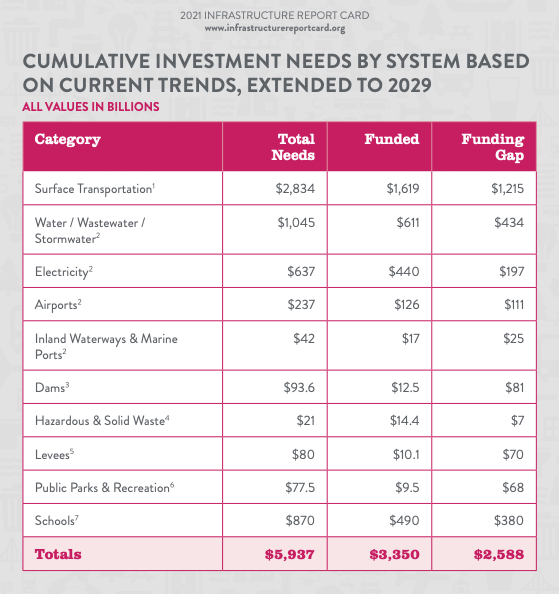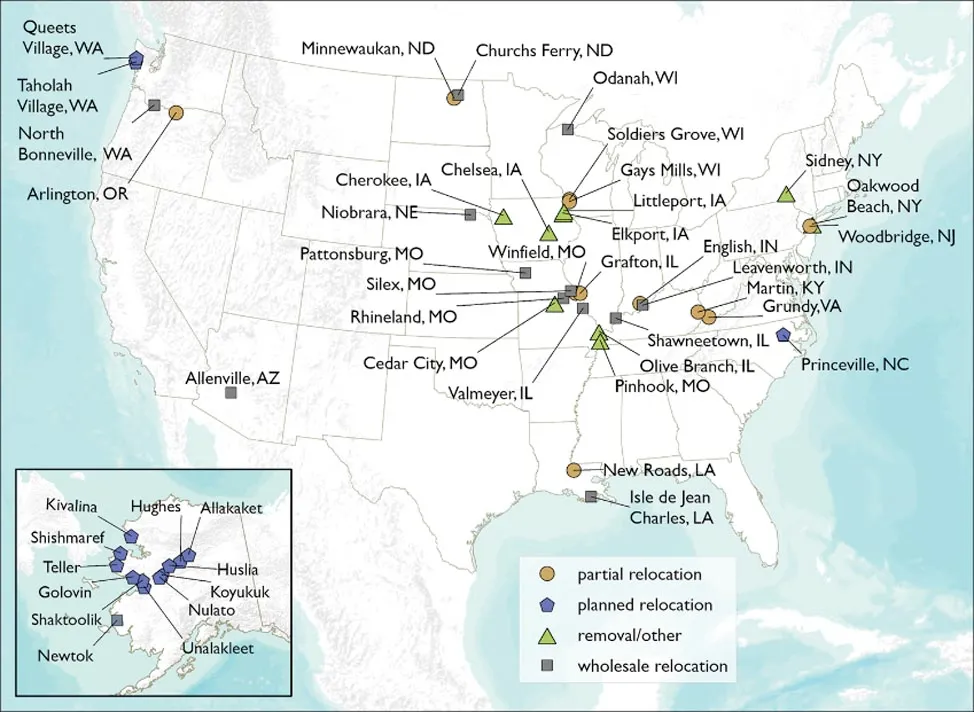Yves right here. This publish describes the 2 primary parts of local weather change hazard to communities, that are flooding/sea degree rises and extreme storms. We are actually seeing a 3rd risk come into focus: the well being results of publicity to excessive warmth and the open query of whether or not present infrastructure can treatment it adequately.
I’m mystified as to why extra world cities going through flood and sea rise dangers haven’t employed the Dutch to determine tips on how to shield them. And concepts like managed retreat are, so far as I can inform, absent from mainstream coverage discussions.
By Jeff Masters, Ph.D., a hurricane scientist with the NOAA Hurricane Hunters from 1986-1990. In 1995, he co-founded the Climate Underground, and served as its chief meteorologist and on its Board of Administrators till it was offered to the Climate Firm in 2012. Between 2005-2019, his Class 6 weblog was one of many Web’s hottest and broadly quoted sources of utmost climate and local weather change info. Initially printed at Yale Local weather Connections
Particles from a collapsed home in Rodanthe, North Carolina, within the Outer Banks, on Could 10, 2022. (Photograph credit score: Cape Hatteras Nationwide Seashore / public area)
Think about this parable from not so way back, in a galaxy not so far-off:
The Kingdom of Nacirema has been engaged in an extended and bloody battle with an age-old foe, and the battle has been going badly of late. Increasingly troopers affected by critical wounds and inside bleeding have been arriving on the hospital. However as a substitute of being admitted to the hospital and receiving the operation wanted to stem the bleeding — a painful and costly process — the troopers have been merely receiving blood transfusions and despatched again to the entrance strains with a dose of painkillers.
Effectively, this isn’t understanding so nice, as a result of the enemy is now utilizing extra harmful weapons, which have been offered to them by the Kingdom of Nacirema’s highly effective and corrupt firms. Now much more troopers are arriving on the hospital with extra grievous wounds, requiring ever-larger blood transfusions. The provision of blood is operating low, forcing the dominion to make some robust decisions. As a result of the troopers’ wounds are actually rather more critical, not sufficient blood is out there for the transfusions to save lots of all of them. Which troopers do they save — and which do they let die?
An Trustworthy Dialog on Local weather Change Triage Is Wanted
The above story is an allegorical one in regards to the U.S. strategy to the brand new and worsening actuality of local weather extremes. Regardless of some current progress (described partially one in every of this sequence), authorities applications to bolster public infrastructure and transfer folks out of flood zones are drastically underfunded. Because of this, when catastrophe strikes within the type of a significant flood, hurricane, or the like, we merely give the equal of a blood transfusion to the injured, with out stopping the bleeding.
The state of affairs has now reached the purpose the place the federal government can’t probably make complete all these worn out by a catastrophe, not to mention purchase out all the properties which have flooded repeatedly or finance all of the seaside nourishment tasks that would defend coastal property towards sea degree rise and stronger storms.
For instance, the U.S. Constructing Resilient Infrastructure and Communities (BRIC) program, meant to assist state and native governments higher put together for future disasters, is massively oversubscribed, regardless of a current addition of extra funds. And although voluntary residence buyouts have helped tens of 1000’s of households transfer out of flood-prone houses, hundreds of thousands extra stay in danger.
With no sensible managed-retreat coverage, chaotic unmanaged retreat from the coasts and flood plains is extra prone to happen, leading to a lot higher hurt to all affected — and to the financial system.
Adapting to Local weather Change Will Be Costly — However Not as Costly as Doing Nothing
The scope of the issue is huge.
As sea ranges rise, $400 billion might be wanted by 2040 to construct sea partitions to guard U.S. communities towards floods anticipated to happen as soon as per 12 months, in accordance with a 2019 research by the Heart for Local weather Integrity, which used a average sea degree rise situation.

The transfer of the Cape Hatteras lighthouse, an instance of profitable managed retreat. When accomplished in 1870, the lighthouse in North Carolina’s Outer Banks had been positioned a secure 1,500 ft inland from the ocean, however pure barrier island erosion processes, augmented by rising seas and storm-driven tides, had lowered this distance to only 120 ft by 1999. That 12 months, the lighthouse was moved 1,500 ft again from the shoreline at a value of $12 million. Locals had been strongly against the transfer, believing it will hurt the vacationer trade. Mockingly, the lighthouse is now extra of a vacationer attraction than ever. The regional slope of the land is one to 10,000, which signifies that a one-foot rise in sea degree may transfer the shoreline about two miles. Thus, the lighthouse will seemingly must be moved once more later this century. (Picture credit score: Nationwide Park Service)
Different prices of making ready for sea degree rise — together with elevating buildings, hardening utilities, telecommunications, transportation programs, and water and sewage infrastructure, plus well being care, group preparedness, and environmental safety and remediation, could possibly be 5 to 10 instances larger, or $2-4 trillion. Measures to guard communities from extra rare floods, such because the one-in-100-year floods which are occurring with rising regularity, may incur further prices.
You’ll be able to add to that invoice the $104 billion wanted to refurbish the nation’s dams, plus the tens of billions wanted to improve our levees. The Bipartisan Infrastructure Act of 2021 allotted some $50 billion over 5 years for local weather change resiliency, however a 2021 advice from the American Society of Civil Engineers estimated that over $2.5 trillion in unfunded infrastructure upgrades are wanted by 2029 so as to attain “B” grades, which means the infrastructure is secure and dependable.

Cash wanted by 2029 to attain a “B” grade for U.S. infrastructure. (Picture credit score: American Society of Civil Engineers 2021 Infrastructure Report Card)
Many infrastructure upgrades aren’t taking future local weather extremes into consideration.
As sea degree rise skilled Robert Younger of Coastal Carolina College wrote in a 2022 New York Occasions op-ed, “a lot of the funded tasks are designed to guard current infrastructure, normally with no calls for for the recipients to enhance long-term planning for disasters or to alter patterns of future flood plain growth. On the very least, we have to demand that communities accepting public funds for rebuilding or resilience cease placing new infrastructure in hurt’s method.”
Simply 3-10% of all cash spent within the U.S. on climate-related tasks is spent on adaptation; the overwhelming majority of this financing comes from the general public sector, in accordance with local weather adaptation skilled Susan Crawford of Harvard. Many of the cash spent on local weather change — for instance, within the landmark Inflation Discount Act of 2022 — is earmarked for lowering local weather air pollution. Crawford advocates prioritizing adaptation spending, since each $1 invested in adaptation may yield as much as $10 in web financial advantages, in accordance with a 2021 report from the World Fee on Adaptation.
On the identical time, extra Individuals are shifting into dangerous locations. The U.S. inhabitants residing alongside the coast at an elevation of 10 meters (33 ft) or decrease is predicted to develop to 44 million by 2060.
“Discouraging this dangerous new growth will keep away from a lot bigger prices of relocating these folks and the supporting infrastructure at a future date,” the Coastal Flood Resilience Challenge writes.
Resistance to Retreat
In the meanwhile, taxpayers are subsidizing rebuilding properties in identified hazard areas a number of instances.
The U.S. Nationwide Flood Insurance coverage Program paid out almost $9 billion to so-called repetitive-loss properties between 1978 and 2012 — almost 25% of complete funds, in accordance with the ebook “Excessive Cities,” by Ashley Dawson. These payouts had been skewed closely towards wealthy folks.
A managed retreat from dangerous locations, accompanied by the constructing of latest, dense development in the best locations, may scale back taxpayer prices and put together Individuals for the approaching local weather extremes.
However there may be little urge for food or incentive for politicians to embrace this resolution. For instance, cities depend on the municipal bond market to fund metropolis providers. However any try to implement a managed retreat program from dangerous areas may harm their credit standing, as a result of a shrinking inhabitants is one much less capable of repay its debt.
“It’s rational for metropolis officers to delay any actual effort to maneuver folks out of hurt’s method, and even to recommend that such a step might ever be vital,” Crawford wrote.
In his 2024 essay, “The Insurance coverage Apocalypse Dialog America Gained’t Have,” journalist Hamilton Nolan is blunt about “how far we’re from a real public discourse on this subject. We’re nonetheless mired within the ‘Every little thing is okay!’ part, the place nervous, sweating politicians with pasted-on smiles beckon you into their doomed states whereas silently praying that the collapse doesn’t come whereas they’re nonetheless in workplace.”
Voluntary residence buyouts have helped about 45,000 households transfer out of flood-prone houses over the previous 30 years, however this represents a tiny fraction of the hundreds of thousands in danger and is fewer than the variety of houses experiencing repeat flood harm and the variety of new houses inbuilt flood plains. In her 2023 ebook, “Charleston: Race, Water, and the Coming Storm,” Crawford of Harvard features a detailed evaluation of the issue, arguing that federal management and funding are wanted to correctly handle retreat from coastal areas:
If FEMA’s buyouts proceed at their present tempo, they’ll be capable of get to about 130,000 extra homes over the following 90 years. However there are one thing like 13 million Individuals in coastal areas who will want buyouts by 2051. FEMA’s present buyout program doesn’t provide any assist to folks in public housing or renters. What’s wanted is a region-wide strategic withdrawal program assisted by coordinated governments in any respect ranges, not a sequence of one-off buyouts.
Do the maths: Just one% of the wanted buyouts might occur beneath the present system — which additionally occurs to be a cumbersome and unfair course of. Buyouts often take two to 5 years to complete, and FEMA disproportionately funds buyouts of weak properties in White communities in comparison with communities of coloration, since cash is allotted based mostly on a cost-benefit evaluation that prioritizes costlier properties. Wealthier communities may additionally have extra sources to affect decision-makers who determine who will get a buyout.
With no sensible managed-retreat coverage, chaotic unmanaged retreat is prone to happen, with loads of authorized challenges, leading to a lot higher hurt to all affected — and to the financial system. As Duke College sea degree rise skilled Orrin Pilkey and co-authors wrote of their 2016 ebook, “Retreat From a Rising Sea: Laborious Selections in an Age of Local weather Change“:
Prefer it or not, we are going to retreat from a lot of the world’s non-urban shorelines within the not very distant future. Our retreat choices may be characterised as both troublesome or catastrophic. We are able to plan now and retreat in a strategic and calculated style, or we will fear about it later and retreat in tactical disarray in response to devastating storms. In different phrases, we will stroll away methodically, or we will flee in panic.
Of their thought-provoking 2021 essay, America’s Subsequent Nice Migrations Are Pushed by Local weather Change, Parag Khanna and Susan Pleasure Hassol write:
Within the twenty first century, we should shift from coastal to inland, from low to excessive elevation, and from resource-depleted to resource-rich areas — and we should achieve this sustainably, for our subsequent habitat might be our final probability to coexist with nature earlier than there may be nothing left to maintain us. To re-sort ourselves in accordance with higher latitude and altitude is to not “retreat” however to embrace the long run guided by instruments that determine topographies higher suited to human habitation.
What We Want: Adaptation That’s Transformative, Not Simply Incremental
The 2023 U.S. Nationwide Local weather Evaluation, the federal government’s preeminent report on local weather change, acknowledged the inadequacy of our local weather adaptation efforts, saying: “The results of human-caused local weather change are already far-reaching and worsening throughout each area of the US … present adaptation efforts and investments areinsufficient to scale back at the moment’s climate-related dangers.” The report known as for “transformative adaptation,” giving as examples:
- Directing new housing growth to much less flood-prone areas
- Revitalization of rivers and relocation of human actions in flood plains (versus constructing channels and dikes)
- The shift from fossil fuels towards clear power manufacturing
- Creation of multi-stakeholders’ committees for managing water use quotas throughout shortage (in comparison with top-down selections)
In distinction, a lot of present U.S. local weather adaptation efforts are examples of “incremental adaptation, resembling spending cash to raise houses above floodwaters. For instance, the 2021 Bipartisan Infrastructure Regulation included funds to raise 19 single-family houses within the Florida Keys.
I like the Keys, however merciless math says that it isn’t cost-effective to defend the low-lying islands, that are all however sure to be swamped by rising seas within the coming a long time. A state-commissioned 2020 report by the City Land Institute discovered that spending about $8 billion to fight sea degree rise and storm surges within the Keys would solely forestall about $3 billion in damages over the interval 2020-2070 — a return of simply 41 cents on every greenback spent. In distinction, the research discovered that in Miami, the same funding would yield a return of over $9 for every greenback spent.
The 2022 IPCC report affirmed the concept that troublesome trade-offs are in retailer: “Solely avoidance and relocation can take away coastal dangers for the approaching a long time, whereas different measures solely delay impacts for a time, have rising residual danger or perpetuate danger and create ongoing legacy results and just about sure property and ecosystem losses.”

The U.S. has an extended historical past of profitable managed retreat and group relocation efforts that we will study from, local weather scientist Nicholas Pinter discusses in a 2021 essay, True Tales of Managed Retreat From Rising Waters. He acknowledges, although, that the teachings realized from relocating comparatively small communities lately (above) might be troublesome to scale up by a number of orders of magnitude.
A Imaginative and prescient for the Proper Technique to do Managed Retreat
As Crawford writes, “That is the American strategy in a nutshell: Right here’s information. Listed here are a set of perverse incentives — progress above all, dependence on property tax receipts, perceived have to encourage folks to dwell in dangerous areas by promoting them flood insurance coverage — and damaged, patchwork, scattershot authorized authorities and applications that make scaled-up, considerate relocation nearly unattainable.”
However U.S. local weather adaptation efforts could possibly be considerably reformed with the passage of the bipartisan Nationwide Coordination on Adaptation and Resilience for Safety Act of 2023, which might create the organizational construction wanted to maneuver ahead and appoint a chief resilience officer appointed by the president to coordinate local weather adaptation efforts. Maybe the chief resilience officer may take some recommendation from Crawford’s 2023 ebook, which has the perfect proposal I’ve seen on how we needs to be dealing with managed retreat from sea degree rise:
Think about regularly making it costlier to dwell in harmful locations whereas concurrently offering time-limited incentives and subsidies supporting shifting away — a multidecade plan, for instance, to regularly part out the mortgages on properties that might be ultimately returned to nature, and to subsidize future lease funds if made in larger, drier locations. Think about planning for a multidecade, gradual transfer, in session with every group, to new and welcoming places well-connected to transit and jobs. Think about caring for the least well-off amongst us, making certain that they’ve a voice on this planning and decisions about whether or not, when, and tips on how to depart, whereas firmly setting an endpoint on human habitation within the riskiest locations, or, no less than, making it clear that these locations might be repurposed for different makes use of. With out this sort of imaginative and prescient, the approaching transition might be a cliff reasonably than a slope, casting hundreds of thousands into sudden distress. Governments in any respect ranges want to grasp that the riskiest response of all can be to do nothing, or to behave solely incrementally, within the face of already accelerating threats which will at any second abruptly start accelerating much more shortly, robbing us of our skill to plan. Would you get on an elevator in the event you knew there was a considerable probability of the cables holding the automobile snapping simply earlier than you reached your flooring? Would you may have your metropolis’s residents collectively get on that elevator? I don’t assume so.
Advisable Studying:
That is half two of a four-part sequence on U.S. local weather change adaptation. Half one checked out quite a few current authorities adaptation efforts to arrange the U.S. for our new local weather. Half three is an essay giving my observations and speculations on how the planetary disaster might play out. Half 4 describes some private actions you can take to arrange for what’s coming, together with a dialogue of the place the most secure locations to dwell is likely to be.
Bob Henson contributed to this publish





